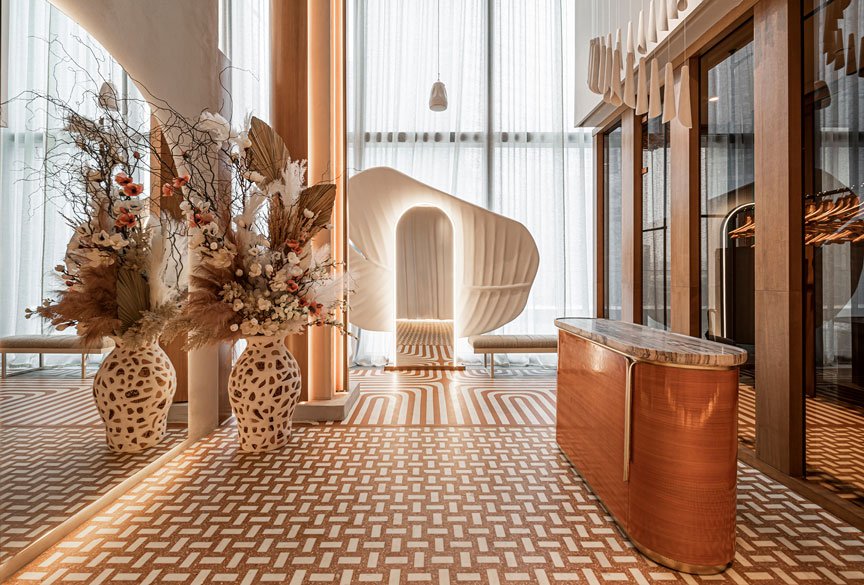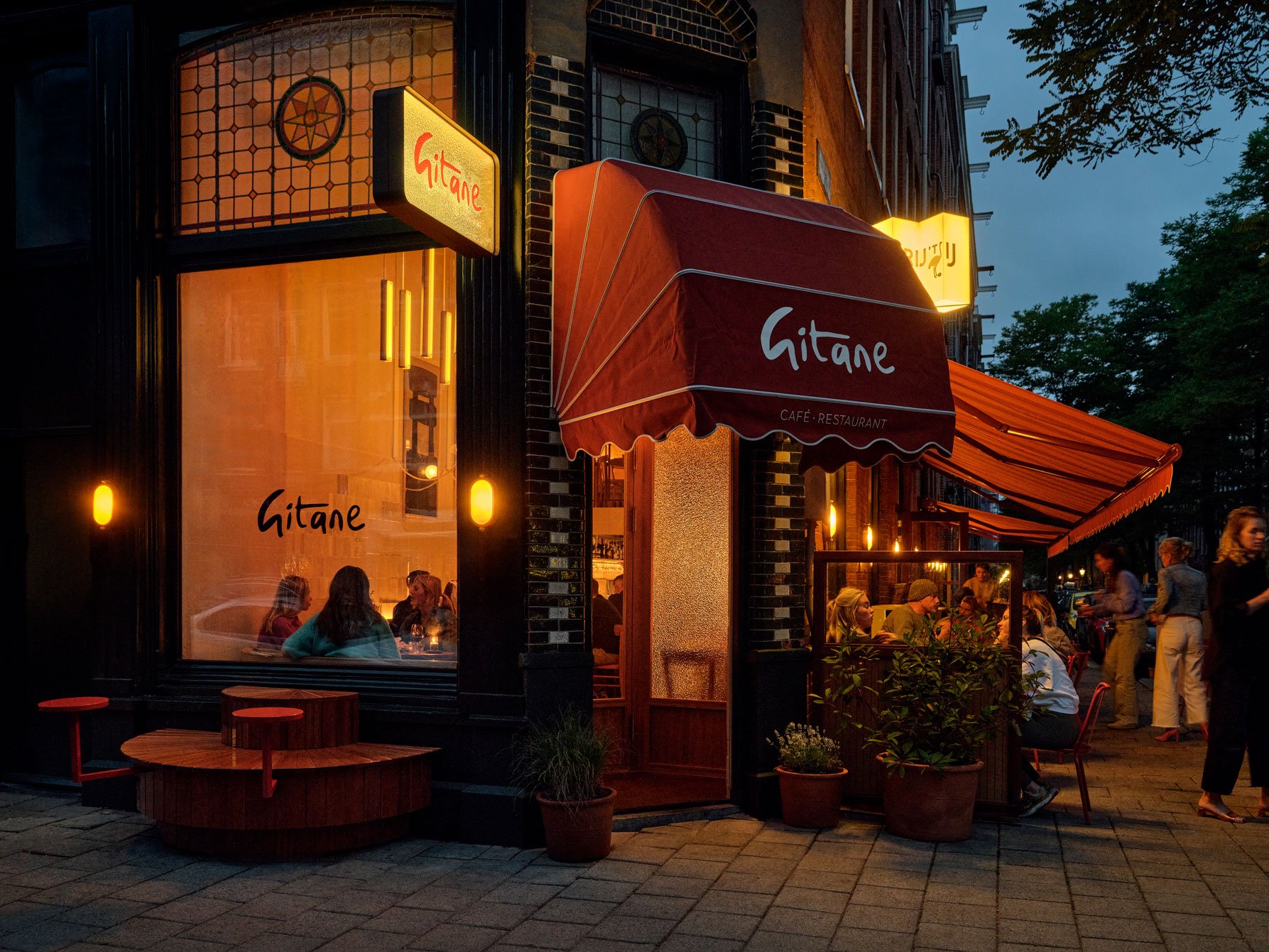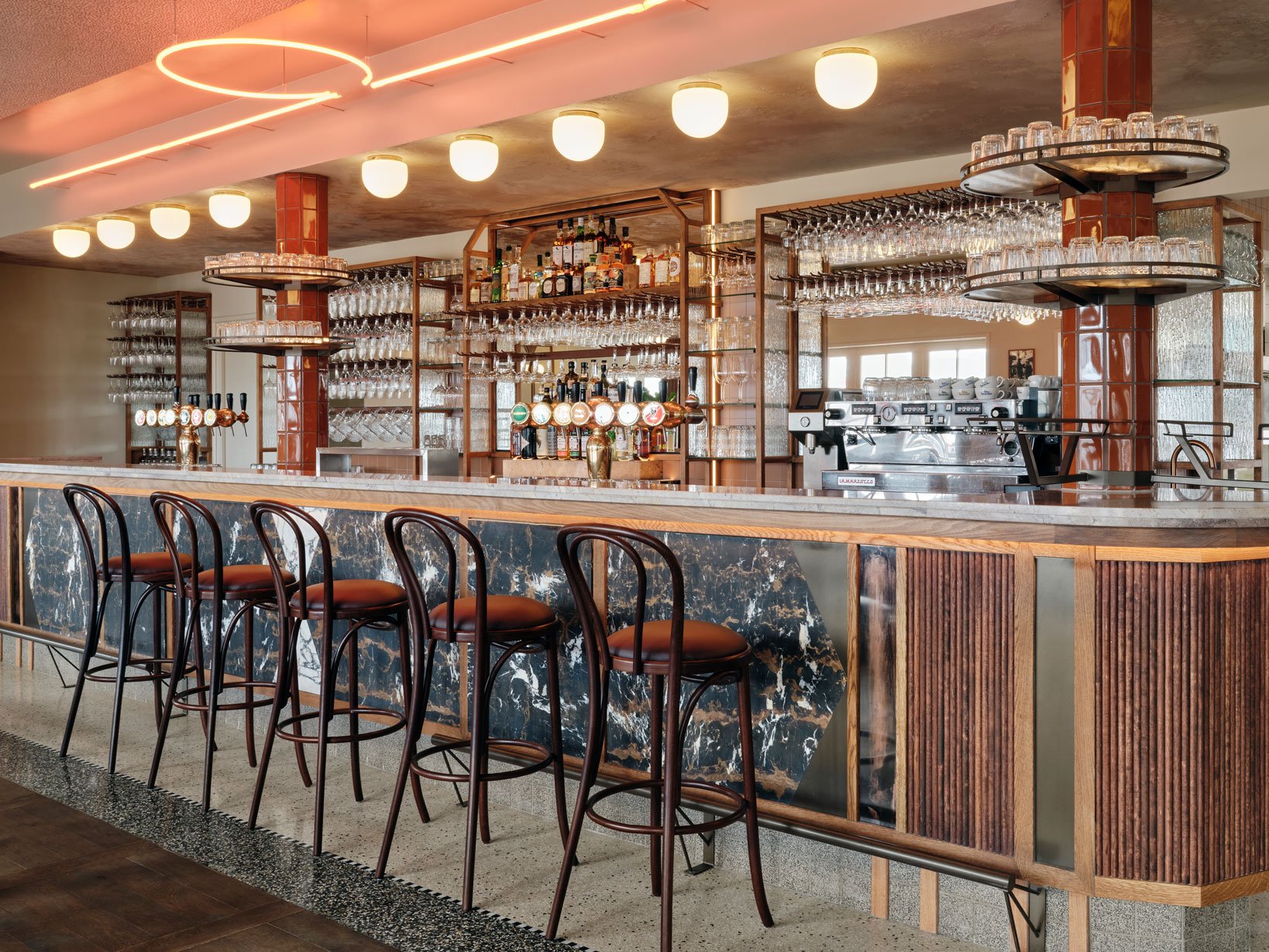MOOS || This New Bar in West Amsterdam Pays Tribute to Early 20th Century Amsterdam School Design

Where is your favourite neighbourhood haunt?
Ours features a cozy ambiance with a warm material palette and captivating yet understated design elements; the atmosphere is amplified by lively chatter where guests huddle together in booths, lean across the bar to chat with the bartender about their latest cocktail concoction, and the community gathers on the terrace for their weekly catchup. Neighbourhood bar, cafe, and bistro, Moos, embodies all these elements.
Moos in West Amsterdam is part of the Goudvisch Family, a group of bars spread across Amsterdam. Studio Modijefsky created the name, brand identity, and interior.
Moos is located in Spaarndammmerbuurt, a neighbourhood best known for Het Schip, a housing complex designed in the Amsterdam School style. These buildings display all the hallmarks of this early 20th century architectural movement: ornate brickwork, a multitude of decorative elements, overlaying patterns in a variety of materials, and a love of craftsmanship.
Moos has the bar as the design’s main protaganist.
As an ode to its rich architectural environment, the interior of Moos features red brickwork tones, tiled surfaces arranged in elaborate patterns, floor finishes and refined details that reflect the values of the Amsterdam school.
Moos is situated on the ground floor of a corner building that boasts a high ceiling and large windows that flood the space with daylight. Just like its Goudvisch siblings, Moos has the bar as the main protagonist; in this case, made of marble, combined with brass, wood and pale pink, beige, and bright yellow tiles.
A large mirror behind the bar is split by two zigzagging lines of orange and red neon, creating a captivating backdrop. It’s divided into two layers, one reaching forward, the other stretching back, to add another dimension to the mirror’s sheer size. A tiled floor pattern creates the perfect base for this centrepiece, with accents of terrazzo flooring outlining the bar’s shape.
The expert combination of materials used for the bar make a statement; it is made of marble, combined with brass, wood and pale pink, beige, and bright yellow tiles.
Above the bar, ceiling lights drop from acoustic panelling made of rich woven fabric. These hanging lamps trace the length of the interior from the entrance to the very end of the mezzanine level. Illuminated spheres placed on the walls spread a pleasant glow throughout the bar. The juxtaposition enhances the warmth of the wooden moulded panelling that traces the entire perimeter with the darker tone of the ceiling that drops down to define a continuous line around the interior.
A multitude of decorative elements and a colour palette that echoes the elegance of ornate brickwork in the surrounding neighbourhood pays tribute to the early 20th century Amsterdam School architectural movement.
At the back of Moos, a staircase leads to a mezzanine floor. Detailed railing and wooden steps create a line of sight that invites guests to walk up to this intimate space, where two corner booth seats finished with leather and fabric awaits.
To reflect its position above the main area below, the cozy mezzanine has a distinct character created by a combination of tiles, wood and a custom light element (echoing the zigzag feature behind the bar) used for the wall cladding. By mixing the traditional – vintage chairs, custom wooden tables, a wooden floor with two different laying patterns, tiles in familiar tones of beige, light brown and pale purple – and the modern – a collection of framed contemporary photography, tiles in a punchy colour palette of mint, blue and yellow – the mezzanine level couples the warmth of nostalgia with a modern edge.
Details of the mezzanine area.
The devil is in the details. The floor tiles bear a distinct, playful pattern beneath each table.
The third and final area (or the first depending on your point of view) is the terrace outside. The interior design concept is translated into outdoor elements in the form of colourful parasols, round awnings and long lines of light bulbs. The perimeter is demarcated by a series of wooden windscreens, with textured glass on the upper part that allows the light through and adds tactility to the screens.
The design details of the tables on the terrace make for the perfect photo op.
“A cozy neighborhood café, where every day is a party. For the neighbourhood, guests and staff. Where friendships are born, beautiful memories are made and you really come home.”
The terrace features similar elements as the interior with warm tones, colourful parasols and a line of bulbs.
By serving as a bridge between the interior and the neighbourhood, the terrace reinforces Moos’s position as a part of the community. Just like the traditional Amsterdam name the bar was given, Moos is a place rooted in the neighbourhood that embodies the best of the city’s values: a warm welcome and sharp style.
PROJECT DETAILS
Project: Moos
Location: Amsterdam, The Netherlands
Program: Cafe, bar
Assignment: Interior Design & Identity Design & Branding
Status: Execution
Size: 108,5 m2 interior, 45m2 terrace
Client: 3WO, Joost Lebesque
Design: Studio Modijefsky; Esther Stam, Moene van Werven, Natalia Nikolopoulou, Agnese Pellino, Ivana Stella, Felicia Urena, Blerina Xhigoli
Photography: Maarten Willemstein





